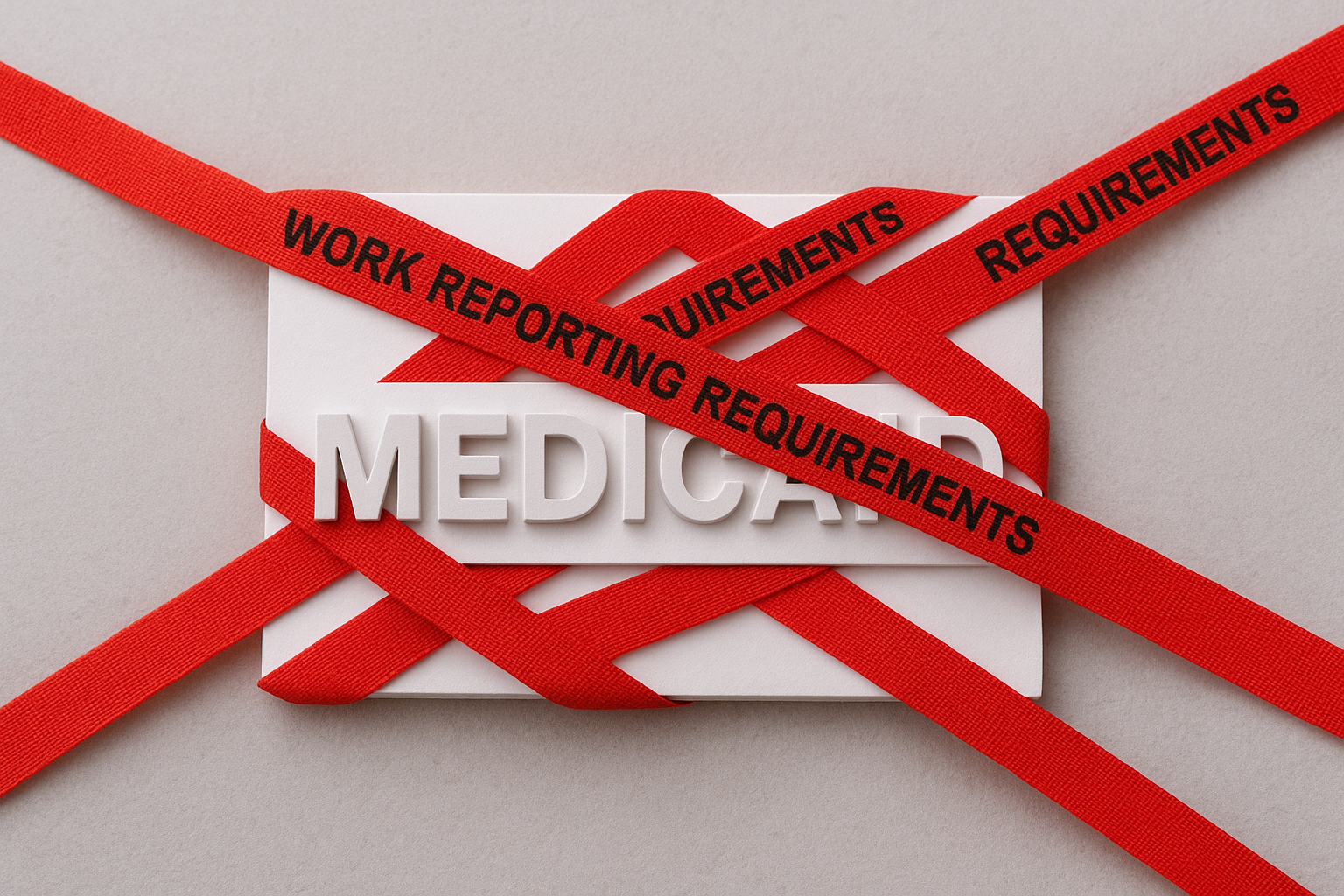As regular readers of SayAhhh! know, on January 1, 2027, 42 states and DC will be required by HR 1 to impose work reporting requirements on many adults covered by Medicaid. The only state in the country that is currently implementing work reporting requirements is Georgia through a Section 1115 demonstration — officially known as “Pathways to Coverage” — but re-named by me as “Pathways to Profit” for corporate consultants. As we have previously blogged about, in Georgia, Deloitte has received millions of taxpayer dollars erecting impenetrable red tape systems while very few Georgians have been enrolled in the coverage they desperately need. Perhaps in light of this, we have seen many signs of large numbers of vendors circling around the new business opportunity created by the federal work reporting requirement hoping to make money.
Georgia’s Pathways to Coverage, along with the state’s 1332 waiver, has been Governor Kemp’s alternative approach to accepting federal funding to expand Medicaid through the Affordable Care Act (ACA). Most of the enrollment in these two waivers in Georgia, which the state generally cites together to show the “success” of Gov. Kemp’s approach, has been in the federal Marketplace thanks to the enhanced ACA subsidies that are now the subject of the government shutdown.
On September 23rd, 2025 the Trump Administration extended Georgia’s Section 1115 demonstration authority to continue Pathways until December 2026, (i.e. when the new federal requirements kick in). A close read of CMS “approval” letter itself reinforces why the policy is such a disaster.
Let’s review the toplines of why Georgia’s approach has been such a terrible public policy choice. Enrollment has been far below the state’s unambitious projections even though the state is not disenrolling people for noncompliance with the work requirement once people are enrolled. Just over 8,000 Georgians were enrolled after two years of operation which equates to just 7% of uninsured low income adults.1 The burdens of red tape and constant reporting are identified in the CMS approval letter as one key reason for low enrollment – the state is planning to move to annual enrollment as a result. The state is also adding an exemption for parents with children under six (new federal rules require parents with children under 14 to be exempt which the state will have to comply with in 2027).
And even worse, the vast majority of the spending in the early years has not been on health care but rather on administrative expenses through contracts with Deloitte as a recent report from the government’s auditors GAO outlined. GAO finds that in the first 15 months of Pathways there were only 3,500 persons enrolled on a full-year equivalent (p. 7). GAO estimates that even with an incomplete summation of all of the administrative spending it has constituted two thirds of the total spending during the period examined (see Table 2).
GAO also notes that federal CMS may have approved inappropriately high matching rates of 90% for new eligibility systems that do not appear to have met federal criteria (p. 11). This is very troubling as we think about what lies ahead as states rush to meet new federal work reporting requirements nationwide. Prior recommendations from GAO to CMS to enhance oversight of demonstration administrative spending were ignored. (see footnote 7 on p. 2).
Also concerning is that CMS recently reduced data reporting requirements for all states in Section 1115 demonstrations and pushed out evaluation dates. Georgia will now only be required to report on the performance of Pathways annually (since its implementation, the state has been providing monthly monitoring reports to CMS).
An interesting side note – the state is dropping its “Member Reward Accounts” and higher premiums. Premiums, which were never implemented, would have further depressed enrollment. Member Reward Accounts, designed to incentivize healthy behaviors2 were also tried and dropped in Florida’s Section 1115 Medicaid demonstration almost two decades ago due to high administrative costs and no evidence of behavioral change.
I will close by quoting the Trump Administration’s letter which highlights some of the reasons that Georgia’s work requirement hasn’t worked:
“The state’s draft Interim Evaluation Report attributes the low enrollment to several factors, such as a general lack of awareness and understanding of the program; a complex and administratively burdensome application process; and a limited set of exemptions and qualifying activities.” (p. 4)
Demonstrations are intended to test an approach and see if it works. As we and other commenters pointed out, based on evidence from prior demonstrations, — all of these problems were predictable. Instead of learning the lessons of prior Medicaid work reporting requirement demonstration projects, the U.S. Congress and the Trump Administration decided to require the country to pursue a policy that has proven unworkable and remarkably unsuccessful. The losers are clear – those that will lose their desperately needed health insurance and the taxpayer. The only winners will be the contractors.
- In addition to their report on the first two years of operation, the Georgia Budget and Policy Institute has a tracker of current and past enrollment available here. ↩︎
- For a description of the Member Rewards and premiums as initially conceptualized see the original Section 1115 demonstration application here. ↩︎


